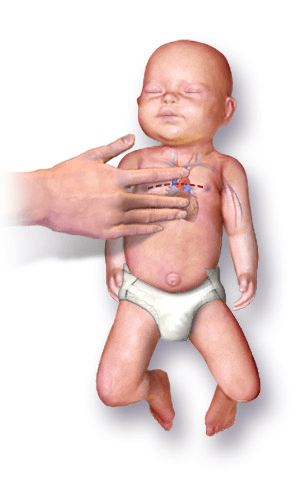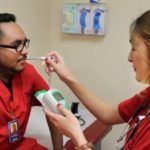What Is CPR Certification?

A Cardiopulmonary Resuscitation (CPR) Certification is an official first aid training in the basic emergency medical procedure against cardiac arrest. First aid courses teach healthcare providers how to execute chest compression with artificial ventilation to preserve organ and brain function and avoid tissue and cerebral death until further measures are deployed.
Certifications, in general, guarantee that the individual is adequately trained and capable of performing correct CPR. The litigious nature of US healthcare involves many lawsuits from patients and victims who have their constitutional rights reserved to sue practitioners.
How to do cardiopulmonary resuscitation (CPR)
The technique integrates chest compression between 2 and 2.4 inches (5 and 6 centimeters). Emergency medical service providers must repeat this motion for at least 100 to 120 chest compressions per minute.

It’s vital not to break the chest bones by leaning too hard. However, compressing with insufficient force will prove ineffective. Also, first-aid providers have to adapt the pressure based on the victim’s body index. The pressure used for a baby or senior citizen is not the same as for a corpulent adult. Practicing is paramount.
Mouth-to-mouth or mechanical ventilation is of secondary importance. The emphasis is put on timely and consistent compressions over artificial ventilation. Furthermore, rescuers must contemporaneously dial 911 to call an ambulance.

This first-aid technique is also required for abnormal breathing, such as agonal respirations, and not only for unresponsive patients. Although artificial ventilation is second in precedence, it is needed to obtain higher survival rates. Moreso, depending on the case, it can just be as important as the cardiac massage. For example, complications in children usually result from the absence of artificial ventilation. This is because problems in children arise from respiratory, rather than cardiac issues.

CPR first aid is unlikely to restart the heart. It’s deployed to maintain minimum oxygenation through partial blood flow to the heart, brain, and other organs. Frequently, the administration of an electric shock to the patient’s heart is needed, also known as defibrillation. Keep in mind that defibrillation is valid only for certain heart rhythms. Particularly, for ventricular fibrillation or pulseless ventricular tachycardia, rather than asystole or pulseless electrical activity. Nonetheless, CPR is still executed alongside defibrillation until the return of spontaneous circulation (ROSC) or the patient is declared deceased.
Personality Type
An ideal emergency medical services employee has a strong, emphatic, and resilient character. He has a tough stomach and is quick to act. The individual has a strong will to save people, self-sacrifice, and help society. Also, he must have both physical and psychological stamina and mustn’t discriminate. The CPR emergency person is an ethical worker, willing to improve and provide assistance even in desperate situations.
Skillset
Soft Skills
- Good physical coordination.
- Emotional stability facing an emergency.
- Social skills and crowd control.
- Good visual and sensory memory.
Hard Skills
- Cardiac arrest recognition.
- Sternum identification.
- Pressure adaptation.
- Multitasking ventilation and chest compressions.
Job Requirements
- Performing CPR on cardiac arrest patients even when no one is around to assist;
- Simultaneously performing cardiac massage and dialing 911 when no one is around;
- Providing artificial ventilation for adults, seniors, kids, and infants.
Education and Training
Obtaining just the CPR certification doesn’t require a minimum education level. However, many professions that require CPR certification demand a high-school diploma.
A valid CPR certification diploma can be obtained exclusively online and under two hours. Most courses, however, require around 5 to 8 hours to complete depending on the provider.
Interested candidates can find CPR training programs at the American Red Cross (ARC), American Heart Association (AHA), community universities, vocational schools, local fire departments, or online.
Be sure to check if the online CPR training courses conform to the latest ILCOR Standards and Guidelines. They also have to be compliant with the Joint Commission (JCAHO).
How to get and maintain a First Aid Certificate
1. Find CPR classes in your area. Such programs teach compression and ventilation procedures, recognizing signs of a cardiac arrest, cessation of breathing, and chocking. CPR training courses present lectures, videos, and on-site demonstrations on mannequins. The CPR certification courses also teach how to deploy resuscitation masks and airbag valves.
2. Once basic CPR training has been completed, students can obtain a CPR certificate. Trainees must pass a written exam and a practical test.
3. After a couple of weeks, candidates receive identification cards attesting to their CPR training certification. For example, the American Heart Association (AHA) and the American Red Cross (ARC) offer a two-year certificate in CPR and AED.
4. Maintaining valid credentials means recertifying over some time. CPR technicians must continue education and pass refresher tests. For instance, The American Heart Association (AHA) and the American Red Cross (ARC) require recertification every two years.
Certification (Types & program acronyms.)
The most typical CPR classes are CPR for infants, CPR for children, CPR for adults, and CPR for healthcare providers and professional rescuers. Most CPR training students also opt for AED certification for the use of the automated external defibrillator. Different agencies use different names and acronyms:
- Basic Life Support (BLS) certification for healthcare professionals;
- Basic First Aid (BFA) certification for non-healthcare workers;
- Infant, child, and adult CPR and First Aid certification for workers handling kids or seniors;
- Bloodborne pathogens certification for needle and blood operators.
Some certifications are identified by numeric levels: Level 1, 2, and 3. Other training programs have slightly different denominations:
- Standard First Aid CPR/AED (level A, C or BLS);
- Emergency First Aid CPR/AED (level C or BLS);
- CPR/AED (level C or BLS).
The alphabetical and numerical grading refers to the learned first aid information, techniques, and job suitability of the certification. Generally, the higher the letter or number, the greater the universality of the award. Due to the decentralized healthcare system of the United States, there are as many names for equivalent certification as the number of agencies. Despite this, there are a few organizations that detain national authority: the American Heart Association (AHA) and the American Red Cross (ARC), among other viable boarding institutions.
Both the American Heart Association (AHA) and the American Red Cross (ARC) offer equivalency training certifications for all the above programs. However, they provide training courses that other organizations don’t offer equivalencies:
Advanced Cardiovascular Life Support (ACLS) training program for healthcare professionals and PALS (Pediatric Advanced Life Support) for workers involved with children.
Salary
According to the US Bureau of Labor Statistics, the median salary for 2018 was $34,320. The statistic was gathered from all EMTs and Paramedics. More so, the job outlook for the next decade (2018 to 2028) is expected to grow by up to 7%.








